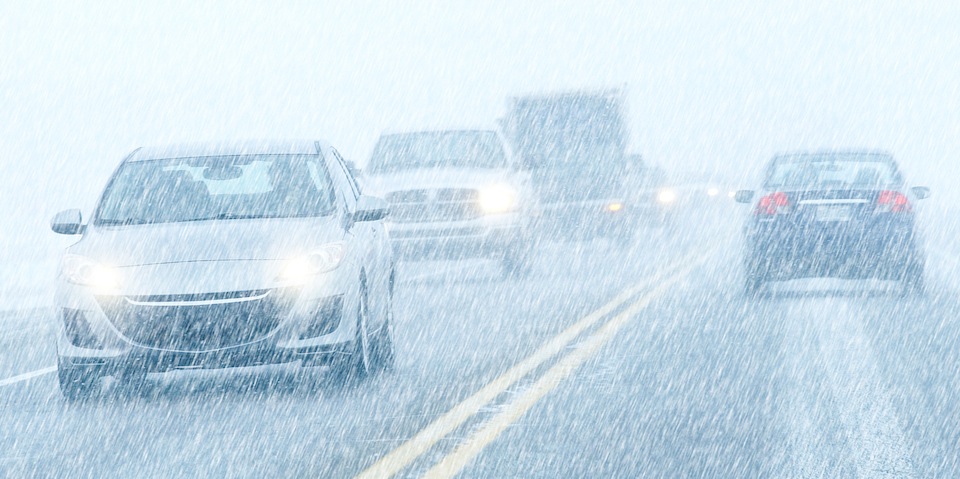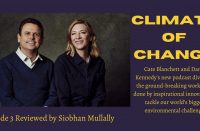The fifth Assessment Report (AR5) from the Intergovernmental Panel on Climate Change (IPCC) will be released later this month, and media are already having a field day with a leaked draft.
Unfortunately, they’re getting a lot of it wrong. You may have seen reports about “uncertainty,” lower temperature predictions than previously warned about and a “warming hiatus” from 1998-2012 that suggests climate change is slowing down. All of these things are misinterpretations (or flat-out misrepresentations) of the report.
The fifth Assessment Report (AR5) from the Intergovernmental Panel on Climate Change (IPCC) will be released later this month, and media are already having a field day with a leaked draft.
Unfortunately, they’re getting a lot of it wrong. You may have seen reports about “uncertainty,” lower temperature predictions than previously warned about and a “warming hiatus” from 1998-2012 that suggests climate change is slowing down. All of these things are misinterpretations (or flat-out misrepresentations) of the report.
Christian Holz of Climate Action Network Canada set the media straight in a technical briefing this morning and explained some of the findings expected in the report. The final report may differ from the leaked draft, but we agreed it was important to clear up the confusion sooner than later.
Mistake #1: Confusing climate sensitivity with predicted temperature change
Climate sensitivity is the temperature change scientists expect to see as a result of a doubling of greenhouse gas emissions from pre-industrial levels, giving us a baseline number to work with. This sensitivity is expanded from an increase of between 2.0 and 4.5 degrees Celsius, to an increase of between 1.5 and 4.5 degrees in the draft AR5 report, and the best estimate is still 3 degrees.
The predicted temperature change we expect to see is calculated based on climate sensitivity and the actual increase of GHGs in the atmosphere. Unfortunately we’re currently on track to more than double GHG emissions, so the perceived “lowering” of the sensitivity range does not mean we can expect a lower actual temperature change. We would only stay at that 1.5-degree change if we barely doubled emissions and climate sensitivity ended up being on the very low end, which is unlikely.
Mistake #2: Not allowing for variability within an overall trend
A lot of news sources (and climate deniers) have been claiming that a “stalling” in warming from 1998-2012 is evidence that climate change has slowed down, or even that it isn’t really happening. Holz explained that this is simply variability within a continuing overall warming trend.
Further, global surface temperature is just one factor of climate change. Sea level rise is not only continuing, but accelerating, and glaciers and ice sheets are melting faster now than they were in the 1990s, the new report is expected to confirm. Ocean temperature – including deep ocean temperatures, we now know – also continue to rise.
Mistake #3: Thinking that “95% certainty” means we just don’t know
95 per cent certain is very certain. The certainty with which scientists can say humans are responsible for climate change since 1951 has increased, from 90 to 100 per cent in the last report, up to 95 to 100 per cent in this one. Yet some people still seem to think those numbers mean scientists don’t really know at all. Certainty is simply a reflection of the intrinsic skepticism of the scientific process and should not undermine our confidence in the report’s findings, which are “clear beyond any reasonable doubt.” Plus, the “uncertainty,” Holz says, if you can call it that, is in the details, rather than the big picture.
What to expect in Canada
Canada will continue to see more warming than the global average, especially in the Arctic and higher latitudes of the territories and provinces (extending down into Northern Ontario) – and especially in winter. The report is also expected to predict more winter precipitation across the country and an increase in heat waves in the 21st century.
The debate about the extent of climate change’s role in the Calgary and Toronto floods won’t exactly be settled. While AR5 isn’t able to identify a solid global precipitation trend, Western Canada shows a “relatively clear upward trend,” Holz told A\J. Increased winter precipitation combined with faster melting in the spring certainly increases the risk of flooding, but there are additional factors at play, such as river management.
“Aggressive” phase-out of fossil fuels over next 40 years needed
Of the various models the IPCC uses to predict what the future might hold, only one set of them shows the temperature meeting the current goal of only 2 degrees of warming. Staying within this limit, Holz says, will require an “aggressive global mitigation strategy,” with the draft report calling for net zero GHG emissions by 2050 or 2070, and negative emissions after that. This can only be done with a phase-out of fossil fuels by mid-century.
This phase-out will leave “insufficiently diversified” economies vulnerable – in other words, now is the worst time to be putting all of our eggs in the tar sands basket. And if we don’t get on the green energy economy bandwagon soon, we’ll be quickly left behind.
Holz’s overall message is that AR5 absolutely confirms that the debate is over. Climate change is happening and humans have caused most of it. Now it’s time for action.
Like our coverage of the IPCC report? Subscribe or donate to keep it coming!
Laura is a past A\J managing editor. She has an MA in Communication Studies from Wilfrid Laurier University, is an organizing aficionado, lackadaisical gardener, and former musical theatre producer. @inhabitings












